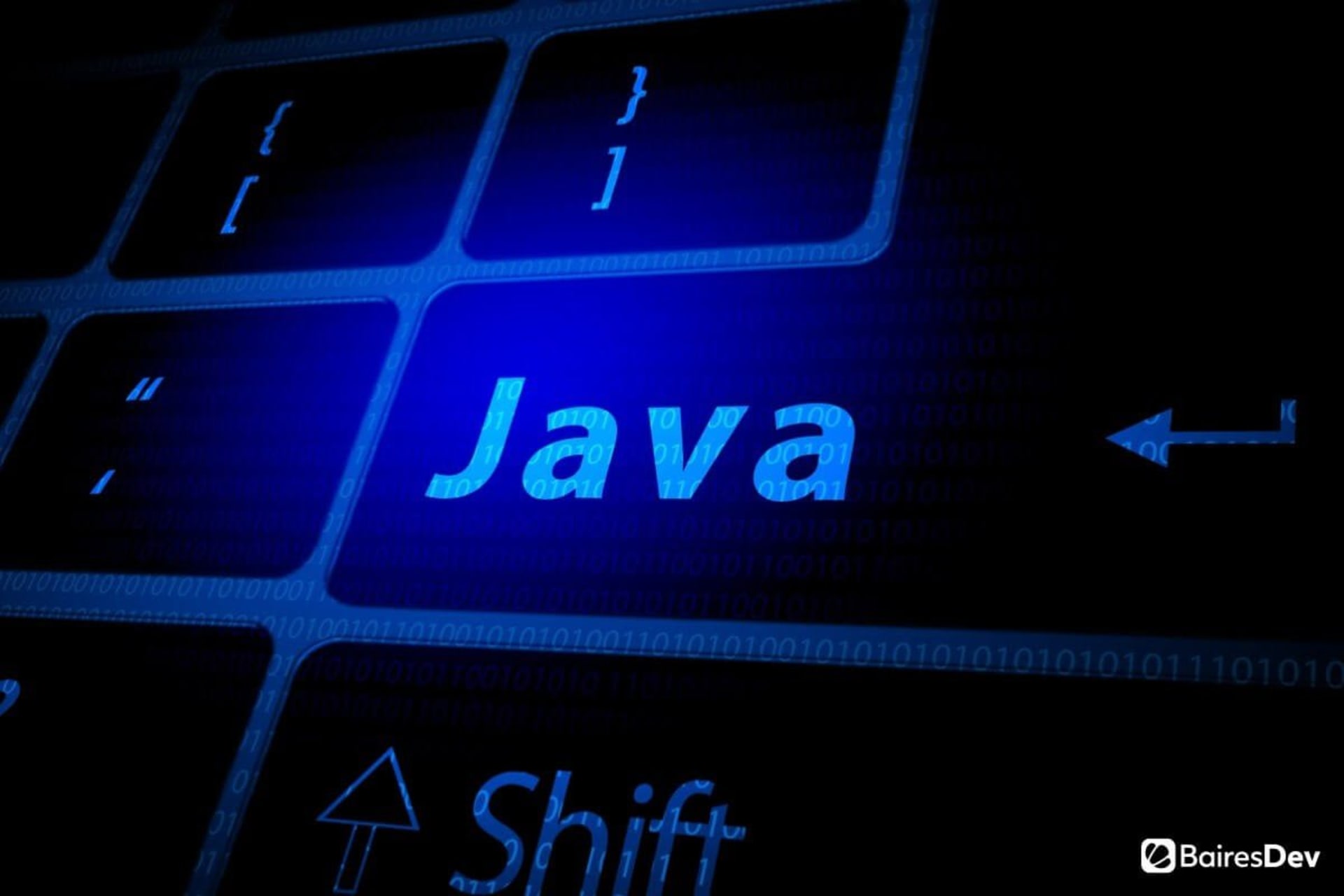Java is still one of the most popular programming languages on the planet. There are several reasons for its continued usage. For one, Java is the primary language for the most widely-used operating system, Android. Another reason for Java’s continued rise is its reliability and scalability. And because so many industries such as banking, finance, retail, Big Data, IT, scientific research, and the stock market rely on Java, this language isn’t going anywhere.
So, for any business looking to continue its digital transformation to meet the needs of modern technology and consumers, Java services should already be in use throughout the company.
Understanding the right Java build tool can significantly boost development efficiency and streamline project workflows, ensuring your team gets the most out of this versatile language.
But on its own, Java can only do so much to empower your developers. To help them get the most out of this language (so they can build better and faster), you need to make sure they have the necessary frameworks to help them get the job done right.
For those who have never heard of a framework, consider it a collection of functions, libraries, and other bits of code that not only make it easier for developers to build but also help indicate what kind of programs can or should be built and how they can connect to one another. Frameworks make it such that engineers don’t have to “recreate the wheel,” by allowing them to pick and choose pieces to use with their original code.
Frameworks are designed to be universal and reusable, so the job of the software engineer is considerably easier.
When working with Java, choosing the right GUI framework is crucial for creating efficient and visually appealing applications, so exploring the best Java GUI frameworks is a smart place to start.
With the definition of a framework out of the way, let’s now take a look at the top 10 frameworks you should consider for your developers.
#1 Spring
| Category | Spring |
| Performance | Good, with potential overhead from comprehensive features. |
| Ease of Use | Moderate learning curve, well-documented. |
| Scalability | Highly scalable due to its modular nature. |
| Community and Support | Large, active community with extensive support. |
| Compatibility | Compatible with a wide range of technologies. |
| Security | Offers robust security features through Spring Security. |
| Flexibility and Extensibility | Highly flexible with dependency injection and AOP. |
| Testability | Strong support for testing with a dedicated module. |
| Licensing and Cost | Open-source under Apache License 2.0. |
| Features and Functionality | Feature-rich, supporting a broad spectrum of enterprise needs. |
| Maintenance and Updates | Actively maintained with regular updates. |
| Project Size and Nature | Suitable for all sizes, particularly enterprise applications. |
| Documentation | Comprehensive and regularly updated. |
| Tooling | Extensive tooling and IDE integration. |
| Popularity | One of the most widely used frameworks. |
Spring is one of the most widely-used Java frameworks primarily for the development of web applications. Spring supports such things as application events and listeners, externalized configuration, YAML, and type-safe configuration.
One of the biggest advantages of using Spring is that it employs Inversion of Control, which makes it possible for you to create a functioning whole out of disparate components.
But why should your developers make use of Spring? For starters, Spring is the single most popular framework for building Java-based web applications. Spring is also capable of exposing RESTful services, includes Spring Security (which adds both authentication and authorization features), and is capable of establishing JDBC connections.
#2 Struts
| Category | Struts |
| Performance | Adequate for standard web applications, with some concerns about overhead. |
| Ease of Use | Steeper learning curve due to action-based framework pattern. |
| Scalability | Scalable for web applications but less modular than Spring. |
| Community and Support | Support has waned; community smaller than Spring’s. |
| Compatibility | Good integration with Java EE technologies. |
| Security | Provides basic security features, but less comprehensive compared to Spring Security. |
| Flexibility and Extensibility | Limited compared to Spring; focuses on web MVC framework. |
| Testability | Supports testing but with less convenience compared to Spring’s testing framework. |
| Licensing and Cost | Open-source under the Apache License 2.0. |
| Features and Functionality | Standard features for MVC web applications but less comprehensive than Spring. |
| Maintenance and Updates | Less frequently updated; seen as a legacy framework. |
| Project Size and Nature | Best suited for simpler web applications; less common for complex enterprise systems. |
| Documentation | Available but not as extensive or up-to-date as Spring’s documentation. |
| Tooling | Limited tooling options in comparison to Spring. |
| Popularity | Less popular, considered legacy but still used in existing applications. |
Apache Struts has been around for over 20 years and was designed to inherit the Java Servlet API properties, which eases the development process of Java EE web applications and encourages a Model-View-Control architecture. Struts uses XML-type files for centralized configurations and drastically reduces the overall development time of web applications.
Struts also includes theme and template support, POJO-based actions, configurable MVC components, tag support, and integration support.
#3 Google Web Toolkit
| Category | GWT |
| Performance | Optimizes for web performance with efficient client-side code. |
| Ease of Use | Moderate learning curve, with a focus on Java developers building frontend applications. |
| Scalability | Good for complex, large-scale web applications. |
| Community and Support | Active community with support mainly from web development forums. |
| Compatibility | Focuses on front-end development; integrates with backend Java frameworks. |
| Security | Provides tools to help with creating secure web applications. |
| Flexibility and Extensibility | Flexible in terms of creating rich internet applications, somewhat less for backend services. |
| Testability | Includes testing frameworks specifically designed for GWT applications. |
| Licensing and Cost | Open-source under Apache License 2.0. |
| Features and Functionality | Rich set of features for building and optimizing complex browser-based applications. |
| Maintenance and Updates | Actively maintained, though less central since the rise of modern JavaScript frameworks. |
| Project Size and Nature | Ideal for complex, client-side heavy web applications needing a rich UI. |
| Documentation | Well-documented, especially for core features and best practices. |
| Tooling | Comes with specialized tools for development and debugging, integrated into IDEs. |
| Popularity | Less popular now with the rise of JavaScript frameworks, but still used for certain types of applications. |
Google Web Toolkit (aka GWT) is yet another open-source framework that helps web developers create and maintain complex browser-based applications. The goal of GWT (pronounced “gwit”) is to enable the productive development of web applications without requiring the developer to be an expert in every browser behavior and quirk.
The GWT toolkit includes all of the Java API libraries, a compiler, and a development server. With GWT developers can write client-side applications in Java and deploy them as vanilla JS, for more information about our JavaScript dev services, reach out to our solutions team.
#4 Grails
Grails is an open-source web application framework that uses the Apache Groovy language (which is based on Java) and follows the “coding by convention” paradigm. Grails serves as a standalone development environment and obfuscates most of the configuration details from the developer.
Grails was developed to provide a solid web framework for Java, reuse existing Java technologies under a single interface, offer a consistent development framework, and include plenty of documentation.
Grails includes 3 particular variations on the standard Java web framework, which are:
- No XML configuration is necessary
- Ready-to-use environment
- Functionality is available through a method that is added to a class dynamically (called mixin)
#5 Play
Play was written in Scala and is used for both web and mobile application development. Because Play is compiled to Java-Bytecode, it’s one of the most powerful Java frameworks on the market.
Play includes plenty of features to make it a favorite of so many Java developers. With just a browser and a text editor, you can quickly make changes on the fly with the help of features like hit refresh workflow, powerful console and build tools, type safety, and built-in testing tools. Play also offers support for both the Eclipse and IntelliJ IDEA IDEs.
#6 Hibernate
The Hibernate framework has become so popular due to its ability to extend Java’s Persistence API support. What sets Hibernate apart from other tools is that it provides the framework for mapping an object-oriented domain model to a relational database, which is achieved with the Hibernate Query Language.
Hibernate features caching, auto-generation, scalability, and reduction of redundancy (via the JDBC API), supports Persistence APIs, and allows communication between an application and any supported database.
#7 Dropwizard
If you’re looking for a lightweight and easy-to-use framework, Dropwizard might be exactly what you need. This framework makes it possible to build Java-based web applications and RESTful web servers quickly.
Dropwizard supports monitoring (via the metrics library), uses the HIbernate Validator API, supports Logback and SLF4J for logging, and packages every application as a jar (instead of a war file).
With Dropwizard, you can build microservices and do rapid prototyping for your applications. Dropwizard is operations-friendly, open-source, and supports the use of external libraries.
#8 Vaadin
Another open-source framework specifically designed for the creation of web applications, Vaadin uses HTML5 and Java-only type-safety for development. If you’re looking for one framework to help you build web applications with heightened security and great UX, this is probably the framework you want.
Vaadin comes with over 45 UI components to make it even easier for you to build quickly and reliably. This framework also includes the Vaadin Collaboration Engine, so your developers can integrate collaboration features into your web applications.
#9 Blade
Another lightweight Java framework, Blade is used extensively for full-stack web app development. Blade is a templating engine that is part of the broader Laravel framework, which is used to create complex web-based applications in Java.
Blade is a very user-friendly MVC framework and works on a modular basis, so you can cut your applications into modules (which is very helpful for debugging). Blade includes plug-in support and works with JSON configuration files.
For anyone looking to start with the simplest Java framework, Blade may be just what they’re looking for.
#10 Wicket
Another framework from the Apache Foundation, Apache Wicket has the goal of bringing the web into the modern Java era. The latest release of Apache Wicket was built on top of Java 11, so it is capable of keeping up to date with the continued evolution of Java.
Wicket allows you to protect your apps with Content Security Policy, which is a modern standard that allows applications to declare approved origins of content before the content can be loaded into a browser. Wicket also supports AJAX, various result types, tags, themes and templates, POJO actions, and configurable MVC components.
Conclusion
If you’re looking for the best framework to assist in your Java development to work more efficiently and reliably, any one of these should do. Partnering with the right Java development services can further enhance your team’s capabilities, ensuring high-quality applications that meet modern demands. Web applications are more popular than ever, and your developers need every tool they can get to keep up with (or beat) the competition. Take the next step by leveraging outsourced Java development to boost productivity and deliver exceptional results.
FAQs
1. Are there any performance benchmarks available for Java frameworks to compare their efficiency and speed?
Yes, there are benchmarks for Java frameworks that allow developers to compare efficiency and speed, evaluating numerous aspects of these qualities. One example is TechEmpower’s Web Framework Benchmarks, which offers performance metrics that assess frameworks for programming languages including Java.
2. How do frameworks typically address security concerns?
Frameworks typically address security concerns through measures like input validation, security configurations, security libraries, authentication and authorization, and other features. At the same time, developers and teams are responsible for implementing coding practices that promote safety and security and keep their tools and practices up to date.
3. Can frameworks integrate with other popular Java libraries or tools commonly used in the development process?
Generally speaking, Java frameworks integrate with other popular Java tools or libraries commonly used in the development process, improving the efficiency and overall quality of the process.







